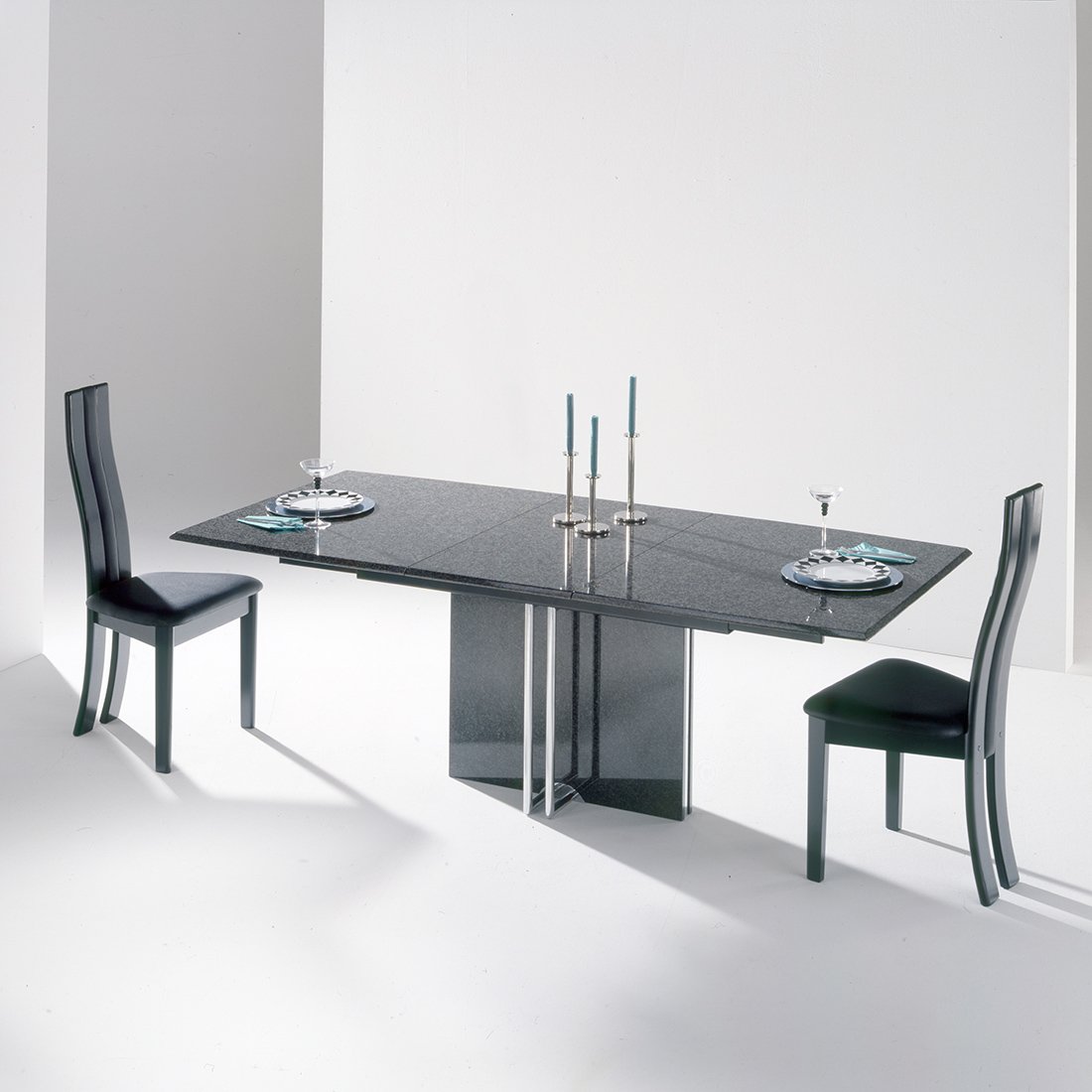It’s in Our DNA
IT ALL STARTED WITH 3,000 DEUTSCHE MARK AND A FIAT 600.
Every story needs a beginning. Ours begins at the end of the fifties. In 1958 at the age of 28, Ronald Schmitt, who did his apprenticeship at the renowned furniture manufacturer Thonet, quit his job as a commercial clerk and, along with his wife Ingeborg, ventured into self-employment.
It wasn’t easy at the beginning, but with 3,000 Deutsche Mark in their pocket and a Fiat 600 to call their own, the Schmitts dared to take the plunge into self-employment. In a small workshop, the two of them produced mosaic coffee tables. The young company was able to make good use of Ingeborg Schmitt’s professional and technically sound skills as a dental technician, and the ambitious company grew and grew. The breakthrough came in 1962 when the first coffee tables with a 19-mm crystal glass top were presented at the Frankfurt Fair. Glass was en vogue at the time, and Ronald Schmitt seized the opportunity early on to specialise in glass and metal.
From 1961 onwards, Friedrich Wilhelm Möller added character to the collection with his striking glass coffee tables with chromed flat steel frames. The Swiss designers of Team Form created the unique K 1000 glass coffee table with a sloping marble column. Both the Möller and the Team Form designs became modern classics.
AT HOME IN THE WORLD. ROOTED IN THE REGION.
Over the years, Ronald Schmitt has grown from a small workshop into a furniture manufacturer with a rich tradition that inspires discerning design aficionados around the globe. We have remained loyal to our headquarters in Eberbach close to Heidelberg. Here, an experienced team of 70 employees lovingly handcrafts exceptional products.
PRESERVE CORE PRINCIPLES AND PROMOTE PROGRESSIVE DEVELOPMENT.
As a company, it’s certainly special to be able to look back on such an eventful and long history with its very own highlights and challenges. In more than 60 years of constant change, we have repeatedly demonstrated our ability to adapt to changing times and market requirements. What has remained is our attachment to unique materials, inventive technical wizardry, and a timelessly beautiful design language. We are aware of our long tradition and benefit from our experience. Today, it is up to us to build on strong foundations, continue writing history, and lead the company into the future.












